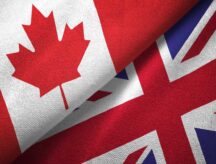How many international students transitioned to permanent residence in 2023?
2023 proved another landmark year for Canadian immigration, with increasing immigration levels continuing to support the country’s demographic and labour market needs.
One of the biggest groups of new permanent residents Canada welcomes every year are former international students, who come to study in Canada and are given the opportunity to build eligibility for Canadian permanent residence (PR). The country’s immigration opportunities are one of the key reasons that Canada has remained one of the most popular international student destinations today.
Discover your options to study in Canada
How many international students became permanent residents in 2023?
As of the most recent Immigration Refugees and Citizenship Canada (IRCC) data from November 2023, 62,410 international students (technically international graduates) became permanent residents of Canada. This number represented an increase of 9,670 from the 52,740 international graduates who became international students in 2022.
Note that the above figure represents students who pursued permanent residence through the pathway of building eligibility through work experience post-graduation (which is enabled by the Post Graduation Work Permit (PGWP)).
Some international students obtained PR directly after graduation (often this is done through specific Provincial Nominee Program (PNP) streams for international graduates). Of this group of international students, 23,150 received PR in 2023.
What is the common pathway for international students to obtain PR?
Unlike many other popular international student destinations, Canada has specific pathways for foreign graduates to both find work and pursue immigration opportunities after their studies. This is the common path for most international students, which represents the 62,410 individuals who received PR status last year. To better illustrate how individuals may move through this process we will take the fictional case of Saahil.
Saahil is an international student from India who has just completed a two-year college course in civil engineering. Since Saahil’s college is a Designated Learning Institution (DLI)—the only schools in Canada authorised to accept international students—and his specific course is eligible for a work permit post-graduation, he can now apply for a PGWP.
Upon receiving his PGWP, Saahil is now eligible to work for most employers in most industries in Canada. Since his course was two years in length, he will likely receive a PGWP that is valid for the same amount of time*. Now that Saahil can work in Canada, he is also able to build eligibility for PR. Most economic immigration programs require at least one year of eligible, full-time work experience (more on this later).
*PGWPs are usually issued for the length of an individual's study period, with a maximum of three years validity.
In Saahil’s case, he has opted to apply to the Canadian Experience Class (CEC) immigration pathway through the Express Entry application management system (a common choice for many international graduates). Saahil needs to obtain one year’s worth of skilled full-time work experience while he is on his PGWP (work experience obtained as a student is not counted). This work experience must be in the same National Occupation Classification (NOC) Training Education Experience and Responsibilities (TEER) level, and amount to 1,560 hours of work (the equivalent of 30 hours of full-time work a week for one year). In addition, the position Saahil works in must be a NOC TEER 0,1,2 or 3 level job.
After Saahil obtains this work experience, the final step before he can submit his candidate profile into the Express Entry pool, is for him to take a language test. Depending on the TEER level of his job, he will need a score equivalent to a Canadian Language Benchmark (CLB) of 7, or 5 in all four skills (reading, writing, speaking and listening) in either English or French.
Once Saahil gets an eligible score, he may finally enter a profile into the Express Entry pool. If Saahil’s profile is chosen, he will receive an invitation to apply (ITA) for PR. From here he will need to submit additional documents in support of his PR application, within 60 days of receiving his ITA.
Assuming he passes through all necessary checks, and is found eligible, Saahil’s PR application will be processed by IRCC, and he will receive a confirmation or permanent residence (COPR or e-COPR) document confirming his new status in the country. From here he is free to settle permanently in Canada.
- Do you need Canadian immigration assistance? Contact the Contact Cohen Immigration Law firm by completing our form
- Send us your feedback or your non-legal assistance questions by emailing us at media@canadavisa.com





